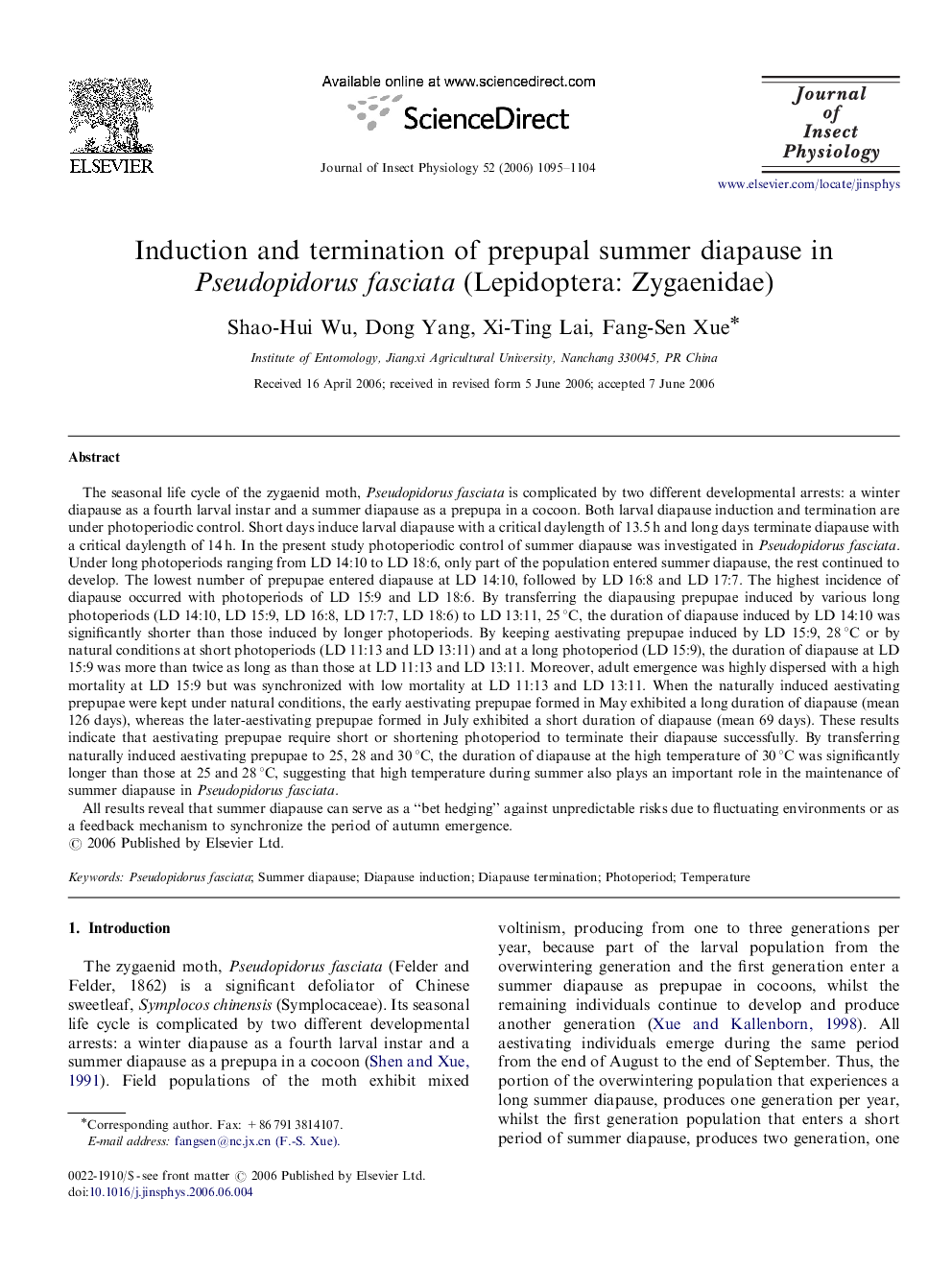| Article ID | Journal | Published Year | Pages | File Type |
|---|---|---|---|---|
| 2841720 | Journal of Insect Physiology | 2006 | 10 Pages |
The seasonal life cycle of the zygaenid moth, Pseudopidorus fasciata is complicated by two different developmental arrests: a winter diapause as a fourth larval instar and a summer diapause as a prepupa in a cocoon. Both larval diapause induction and termination are under photoperiodic control. Short days induce larval diapause with a critical daylength of 13.5 h and long days terminate diapause with a critical daylength of 14 h. In the present study photoperiodic control of summer diapause was investigated in Pseudopidorus fasciata. Under long photoperiods ranging from LD 14:10 to LD 18:6, only part of the population entered summer diapause, the rest continued to develop. The lowest number of prepupae entered diapause at LD 14:10, followed by LD 16:8 and LD 17:7. The highest incidence of diapause occurred with photoperiods of LD 15:9 and LD 18:6. By transferring the diapausing prepupae induced by various long photoperiods (LD 14:10, LD 15:9, LD 16:8, LD 17:7, LD 18:6) to LD 13:11, 25 °C, the duration of diapause induced by LD 14:10 was significantly shorter than those induced by longer photoperiods. By keeping aestivating prepupae induced by LD 15:9, 28 °C or by natural conditions at short photoperiods (LD 11:13 and LD 13:11) and at a long photoperiod (LD 15:9), the duration of diapause at LD 15:9 was more than twice as long as than those at LD 11:13 and LD 13:11. Moreover, adult emergence was highly dispersed with a high mortality at LD 15:9 but was synchronized with low mortality at LD 11:13 and LD 13:11. When the naturally induced aestivating prepupae were kept under natural conditions, the early aestivating prepupae formed in May exhibited a long duration of diapause (mean 126 days), whereas the later-aestivating prepupae formed in July exhibited a short duration of diapause (mean 69 days). These results indicate that aestivating prepupae require short or shortening photoperiod to terminate their diapause successfully. By transferring naturally induced aestivating prepupae to 25, 28 and 30 °C, the duration of diapause at the high temperature of 30 °C was significantly longer than those at 25 and 28 °C, suggesting that high temperature during summer also plays an important role in the maintenance of summer diapause in Pseudopidorus fasciata.All results reveal that summer diapause can serve as a “bet hedging” against unpredictable risks due to fluctuating environments or as a feedback mechanism to synchronize the period of autumn emergence.
